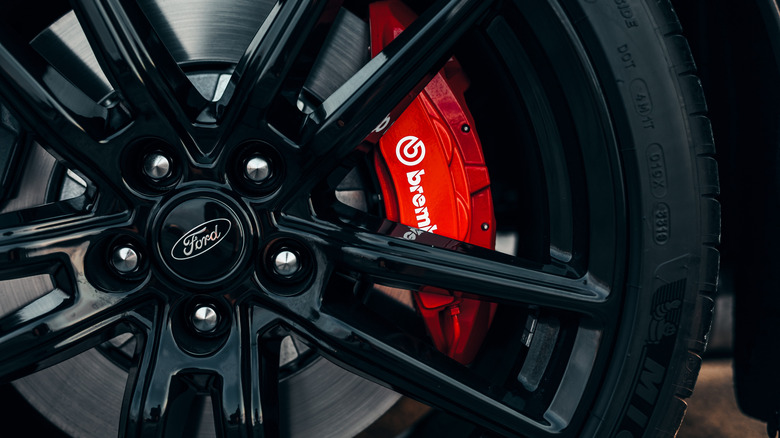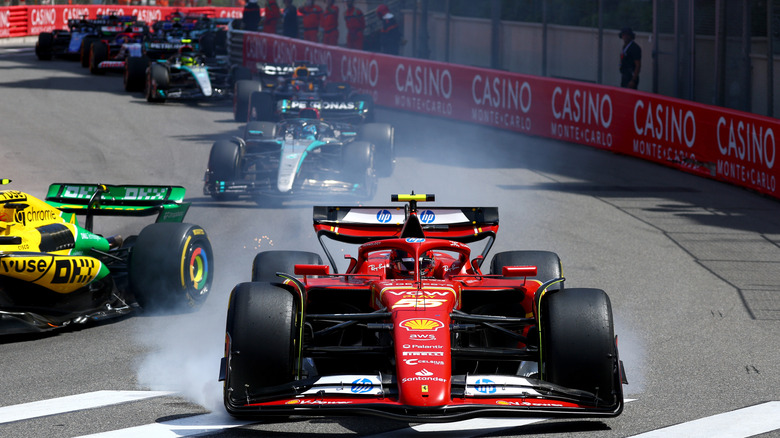Why Does Every Formula 1 Team Use Brembo Brakes?
Every Formula 1 season, several companies usually step up to supply vehicle parts and components to the many talented teams that compete in the races. Among these is Italian manufacturer Brembo, whose brakes have earned a reputation as some of the best in slot when it comes to reliable extreme stopping power and precision on the F1 track.
All Formula 1 racing teams use these brakes today, not only because of their reliability and potency but also because of their high level of customization, which allows each team to choose brake setups that favor their racing style. Given the amount of work these brakes do, the technology used to make them is also quite different from that used to produce commercial brakes. Every aspect, from the materials chosen to how they are assembled, is state-of-the-art.
As you would expect, a few companies worldwide can achieve the level of precision needed to make these brakes, Brembo being high on that list. It has a long history in Formula 1, which has provided ample opportunities to develop, test, and refine braking solutions over the decades. Today, teams will gravitate toward the company's products because of this proven success, which, when combined with the potency of its braking systems, makes Brembo one of the best bets. Let's talk about it.
Brembo's F1 brakes are vastly different from what exists on public roads
Like many other motorsports, Formula 1 is known for its incredible speeds. Many of the vehicles that take part in the races are masterfully crafted to reach over 200 miles an hour with as little drag as possible. In that respect, many aspects of the cars—from their front and rear wings to the jagged windshields—ensure that F1 cars reach those speeds with little effort. Conversely, the cars come with several systems to allow them to come to abrupt stops, one of the main ones being the brakes.
What makes these brakes so special is how Brembo makes them. First, Brembo makes its rotors from a carbon-carbon composite, which is quite different from the cast-iron or steel discs found on public road vehicles, or the carbon-ceramic discs that many supercars and hypercars may use in their braking systems. The composite used here ensures the brake system is highly heat-resistant and ultra-lightweight, offering almost twice the grip during races compared to other braking systems. They also experience very low wear and tear, allowing for greater mileage.
Brembo offers a range of caliper customization options for each F1 team
Second, while all the brakes used in F1 are indeed from Brembo, the brake maker offers different caliper options to each team, giving them a level of customization that allows them to tweak the systems to their drivers' preferences and the specific requirements of their vehicles. What that means is that each of these brakes is bespoke to every team, even though they come from the same manufacturer. The difference in choice lies mainly in the calipers' weight and stiffness. While some teams might settle for stiffer, heavier calipers, others may choose lighter, less rigid ones. However, each of them has undergone similar manufacturing processes that Brembo has been perfecting since it entered F1 in 1975.
Today, the company is an essential partner for Formula 1 teams, providing solutions that include customizable calipers, high-performance brake disks, by-wire units and master cylinders that are crucial for managing rear braking in F1 cars, and incredibly low wear brake pads. There's also the company's HTC 64T brake fluid, designed to operate at extremely high temperatures without vapor lock, ensuring consistent, reliable braking performance. Considering that all F1 vehicles come with turbocharged engines capable of reaching 1,000 horsepower, all these components form the necessary system for these cars to stop almost as quickly as they accelerate.


